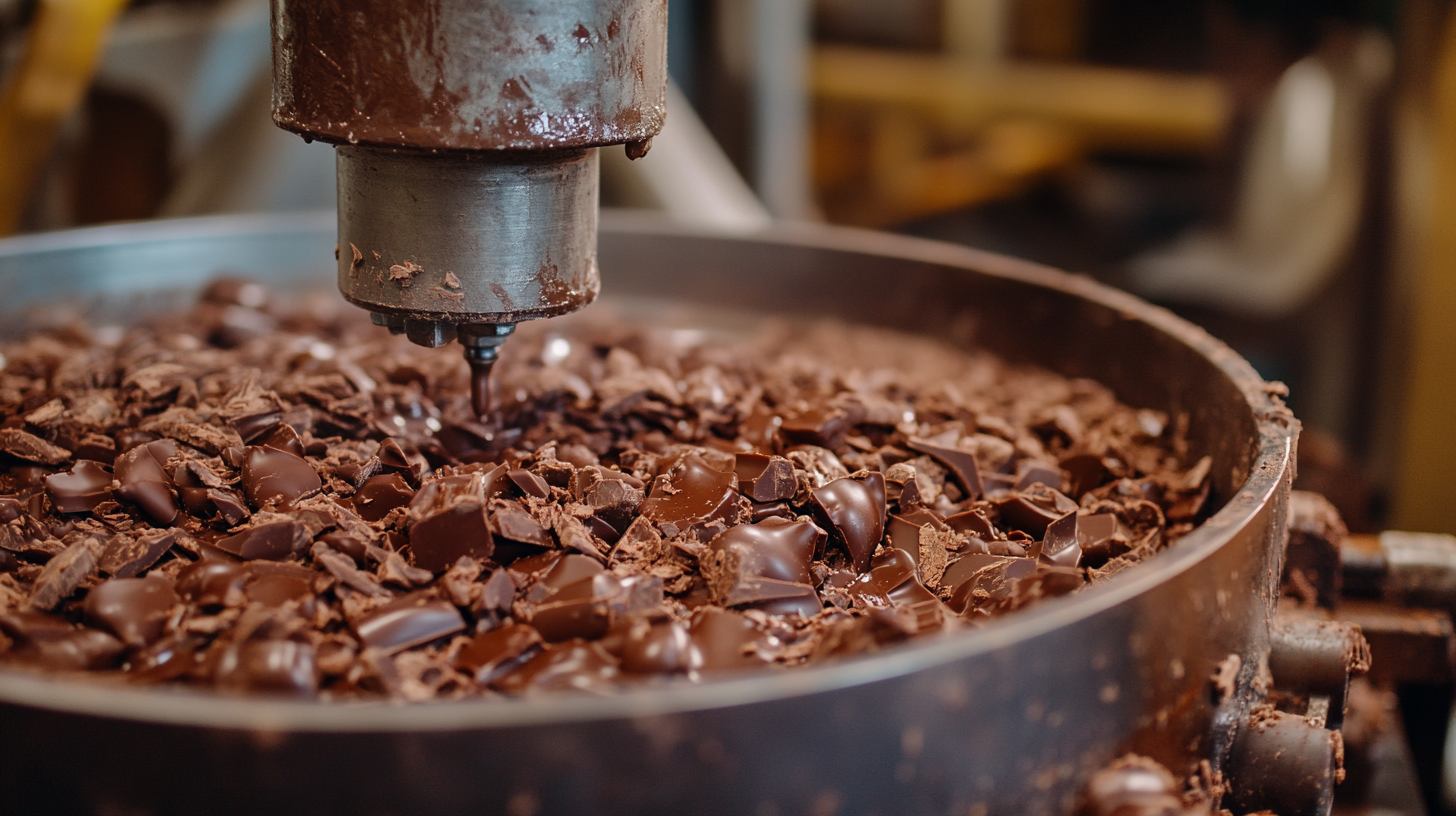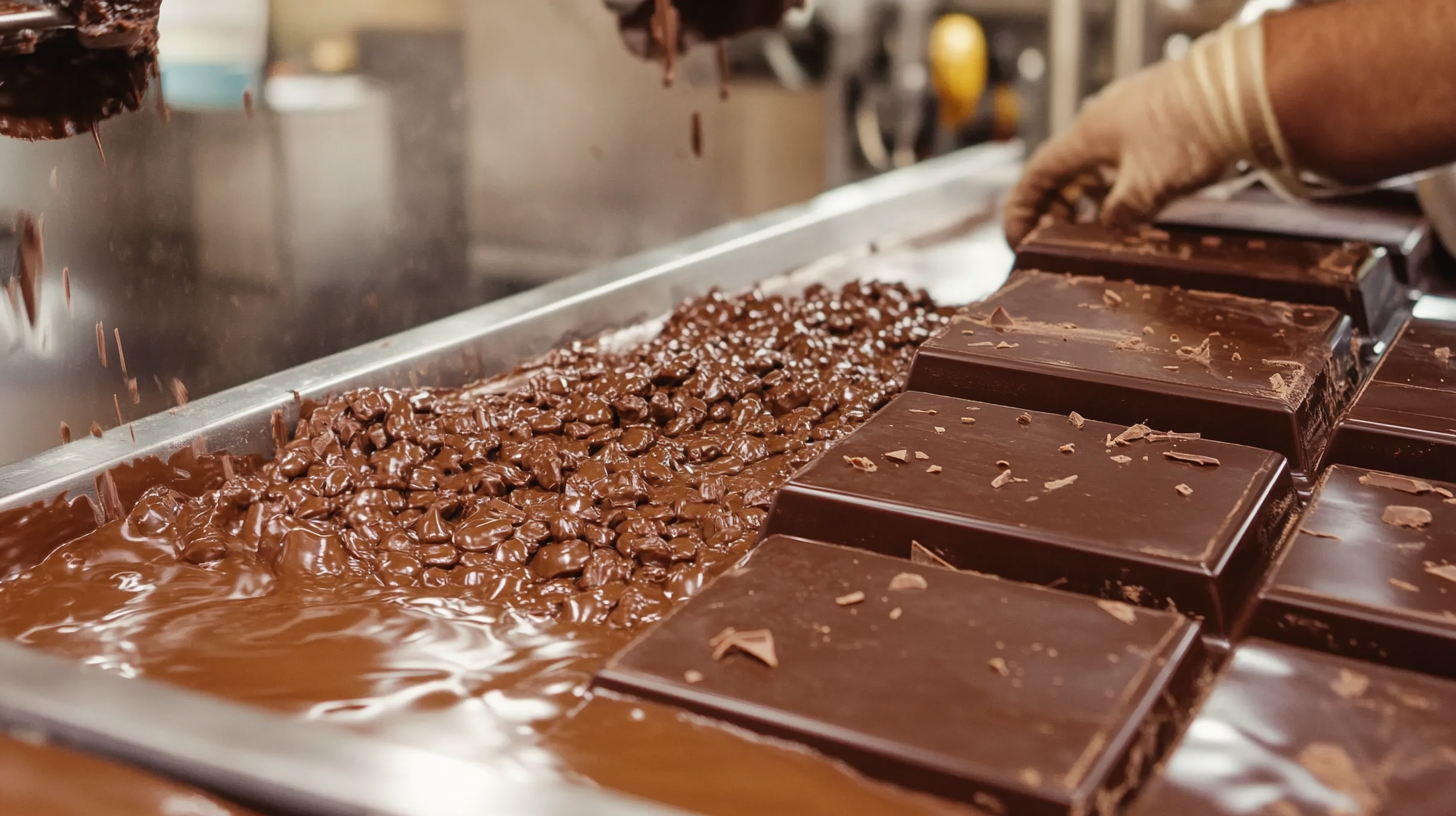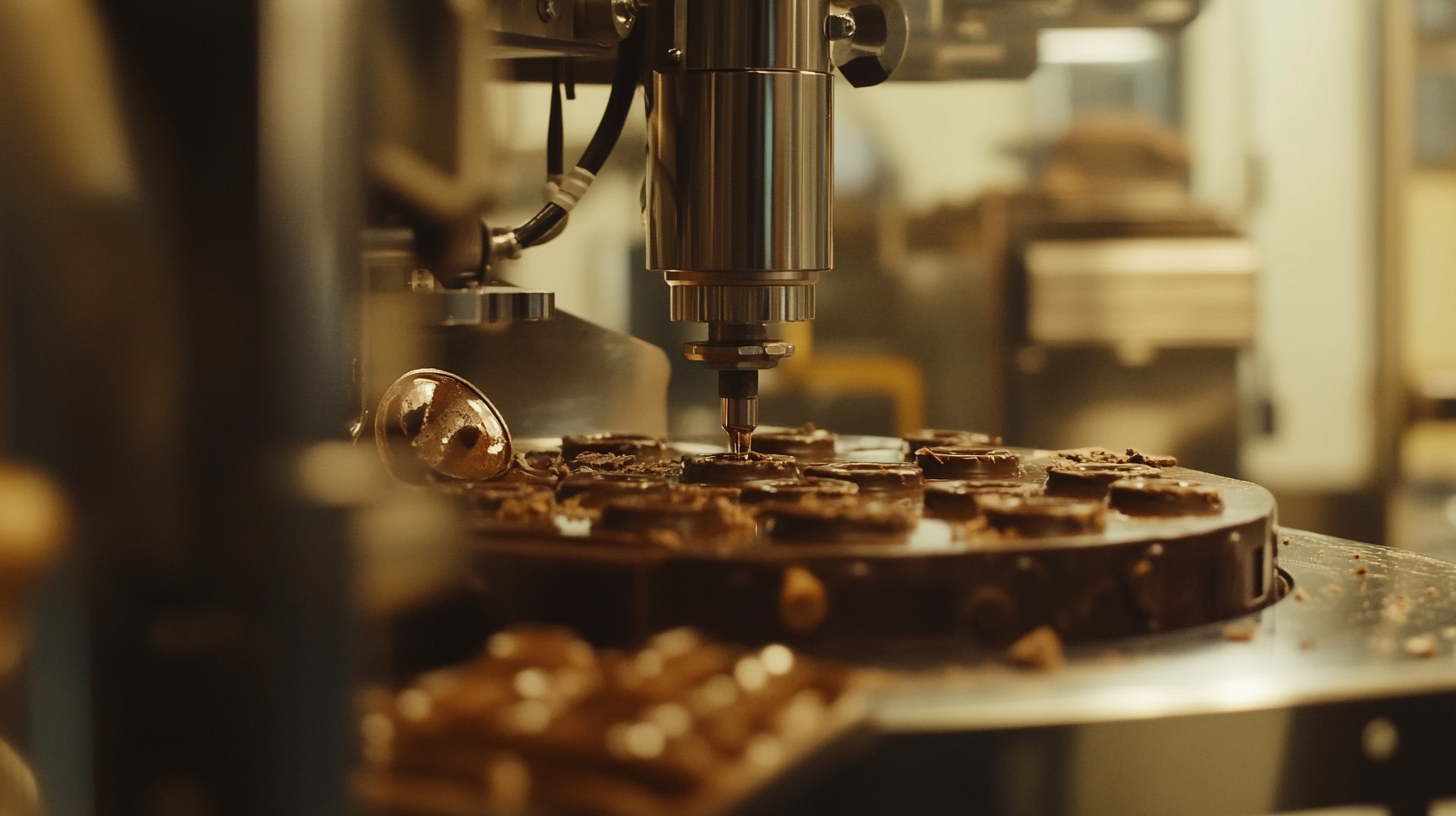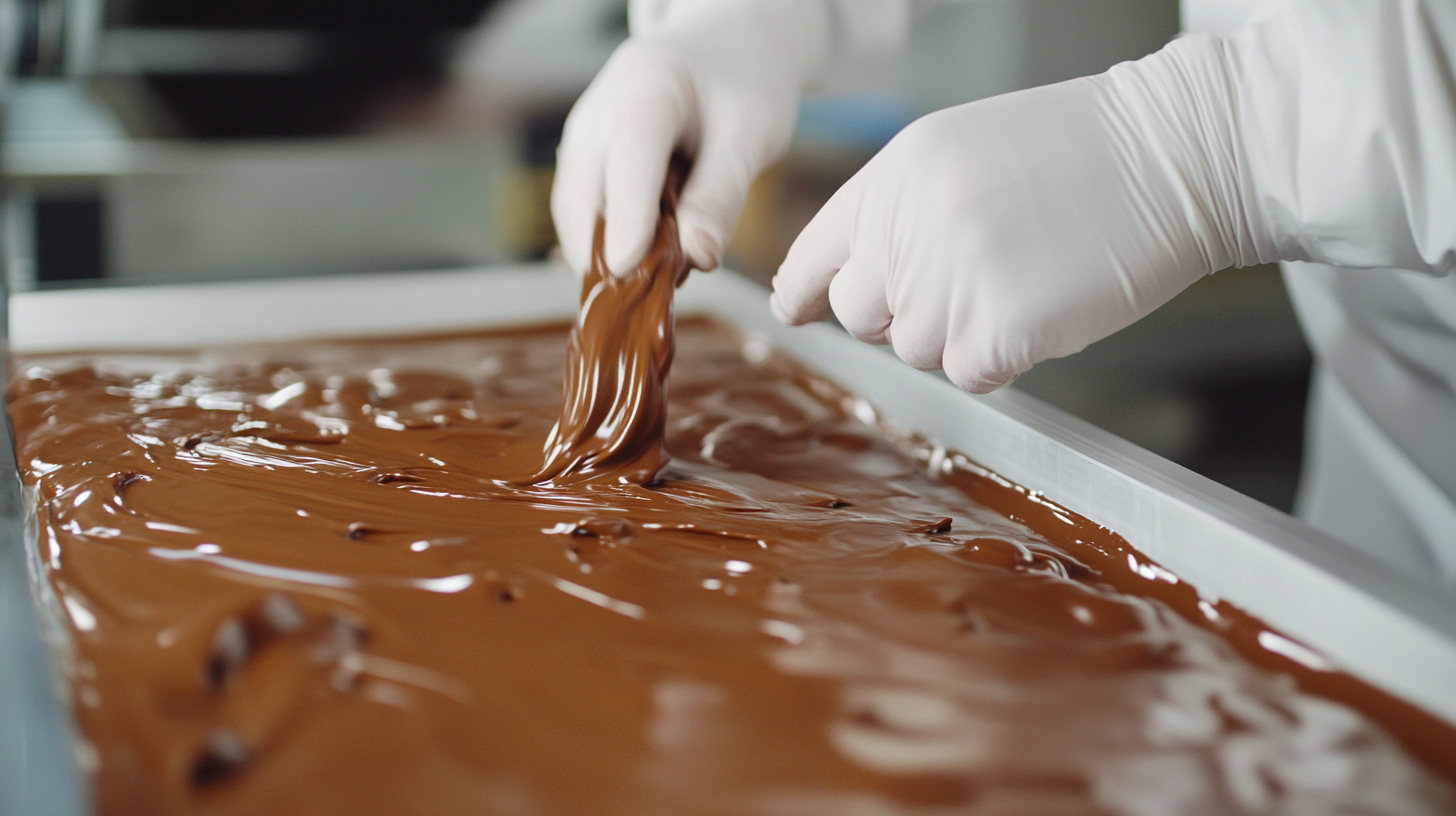In the ever-evolving chocolate manufacturing industry, the efficiency of a "macchina di cioccolato" is paramount to maximizing output and ensuring product quality. Recent industry reports reveal that well-maintained chocolate machines can lead to a 20% increase in production efficiency and a significant reduction in waste. A proactive maintenance strategy not only extends the lifespan of the machinery but also ensures consistent product quality, which is crucial in meeting consumer demands. As global chocolate consumption continues to rise, projected to reach 7.2 million metric tons by 2025, the importance of meticulous aftercare and maintenance strategies cannot be overstated.
Effective aftercare practices for a "macchina di cioccolato" can further enhance operational performance. According to the International Chocolate and Cocoa Organization, companies that invest in comprehensive maintenance strategies report a 15% decrease in unplanned downtime. This statistic underscores the necessity of prioritizing maintenance schedules, regular machine inspections, and thorough training for operators. By adopting a robust approach to aftercare, manufacturers not only reap the benefits of reduced operational costs but also secure a competitive edge in an increasingly crowded market.

Routine maintenance of chocolate machines is crucial for ensuring optimal performance and longevity, as recent studies highlight that sustainable practices can lead to a reduction in operational downtime by up to 30%. Regular checks on critical components like motors, belts, and heating elements can significantly decrease the risk of failures. For example, an industry report from the International Cocoa Organization (ICO) indicates that effective maintenance practices can extend the life of chocolate machines by an average of 20% to 25%, translating to substantial cost savings over time. Best practices for routine maintenance should include a systematic inspection schedule, which ensures that all mechanical and electrical components are assessed regularly. Adopting a predictive maintenance approach, as suggested by the latest findings from the Maintenance Planning and Scheduling Institute, can help identify potential issues before they lead to major breakdowns. Utilizing data analytics to monitor machine performance can be particularly beneficial, allowing operators to detect anomalies in real time and schedule maintenance activities accordingly. Furthermore, training personnel on the proper maintenance techniques enhances the efficacy of these practices. According to a report from the Food Processing Suppliers Association (FPSA), companies investing in staff training experience lower repair costs and improved machine efficiency. Regular cleaning and lubrication, combined with adherence to manufacturer guidelines, also play pivotal roles in maintaining the quality of chocolate products and preventing contamination risks, ultimately maximizing the value of the chocolate manufacturing process.

In the intricate world of chocolate production, aftercare and maintenance strategies are essential for ensuring the longevity and efficiency of chocolate machinery. Proper aftercare not only preserves the equipment but also plays a significant role in maintaining the quality of chocolate. By implementing routine inspections and maintenance protocols, manufacturers can prevent unexpected breakdowns and downtime, which can lead to costly delays and potential losses in product quality.
Understanding the importance of aftercare in chocolate production goes beyond just maintaining machinery; it encompasses the overall health of the production system. For instance, just as athletes focus on their recovery to enhance performance, chocolate producers must prioritize aftercare to optimize their operations. A well-maintained machine operates more efficiently, yielding higher quality products and ultimately satisfying customer demands.
Recent innovations in food technology, such as the development of protein-rich recovery drinks, highlight the trend of enhancing the nutritional value of products. This mirrors the approach needed in chocolate production where ongoing research and development can lead to improvements in both the process and the end product. Just as a well-formulated recovery drink supports athletes, thorough aftercare strategies support chocolate producers, ensuring that every batch meets the high standards consumers expect. Thus, maintaining machinery is not merely a task; it’s an investment in quality and productivity.

In the world of chocolate production, maintaining the efficiency and longevity of chocolate machines is crucial for maximizing value. According to a report by the International Society of Chocolate and Cocoa, improper maintenance can lead to a staggering 30% decrease in production efficiency. This highlights the importance of identifying common issues that can arise with these machines. Regular inspections are paramount; issues like worn conveyor belts, malfunctioning temperature controls, and inconsistent mixing can disrupt production lines, leading to loss of both time and resources.
Preventative strategies can significantly mitigate these risks. For instance, implementing a predictive maintenance program can reduce unexpected breakdowns by up to 50%, as reported by the Manufacturing Maintenance Enhancement Association. Utilizing IoT sensors to monitor machine performance allows manufacturers to address mechanical issues before they escalate. Furthermore, conducting regular training sessions for operators on the importance of proper machine use can prevent operational errors, which are often a leading cause of malfunctions.
Additionally, the adoption of hygiene best practices is essential in chocolate production. According to the Food and Drug Administration, contamination due to inadequate cleaning can lead to significant product recalls, with costs averaging around $10 million per incident for manufacturers. Therefore, developing a comprehensive cleaning schedule and ensuring proper training on hygiene protocols can safeguard product quality while extending the life of the equipment. By aligning maintenance strategies with these preventative measures, chocolate manufacturers can enhance operational efficiency and protect their investments.

In the pursuit of maximizing the value of chocolate machine aftercare and maintenance, effective cleaning techniques play a pivotal role. Just as in the rapidly evolving landscape of clean energy, where companies aim for sustainability and efficiency, chocolate production requires a similar commitment to excellence in hygiene and upkeep. Regular and thorough cleaning not only prolongs the life of the machines but also ensures that chocolate quality remains consistent, which is essential in meeting consumer expectations and regulatory standards.
By implementing optimized cleaning methods, such as utilizing environmentally friendly cleaning agents and state-of-the-art washing technologies, manufacturers can enhance the performance of their chocolate machines. This is akin to the advancements seen in the wet automated solar panel cleaning market, which is projected to grow significantly as demand for renewable energy rises. Companies in both sectors are learning to harness innovation to drive performance and sustainability. In chocolate production, leveraging smart technology in cleaning processes can reduce downtime and improve overall productivity, enabling manufacturers to meet the increasing market demand for high-quality, clean products while adhering to green practices.
Furthermore, just as clean energy firms focus on carbon neutrality and sustainable resource management, chocolate manufacturers should prioritize eco-friendly cleaning processes that minimize waste and reduce environmental impact. This dual approach not only improves machine efficiency but also aligns with broader global sustainability goals. Embracing these cleaning innovations can lead to a cleaner, safer production environment, ultimately contributing to the long-term success of the chocolate industry.
Investing in staff training for equipment care and maintenance is crucial for any chocolate manufacturing operation aiming to maximize the value of their chocolate machines. Well-trained personnel not only understand the technical aspects of the machines but also appreciate the importance of routine maintenance, which can significantly extend the lifespan of the equipment. Regular training sessions ensure that staff are up-to-date with the best practices, enabling them to identify potential issues early and implement preventive measures effectively.
Moreover, creating a culture of knowledge-sharing and continuous improvement within the team empowers employees to take ownership of their roles in equipment care. Engaging staff in hands-on training sessions that cover troubleshooting techniques and proper cleaning methods helps to instill a sense of responsibility. When workers feel confident in their ability to care for the machinery, they are more likely to contribute positively to the overall efficiency and productivity of the production line.
Furthermore, investing in training can lead to significant cost savings. Efficiently maintained machines experience fewer breakdowns, which minimizes downtime and the associated costs. Additionally, a well-maintained machine operates at optimal efficiency, improving product quality and consistency. Therefore, by prioritizing staff training in equipment care and maintenance, chocolate manufacturers can not only protect their investments but also cultivate a dedicated workforce committed to excellence.
Utilizziamo i cookie per migliorare l'esperienza utente. Per maggiori informazioni, consulta la nostra Cookie Policy.